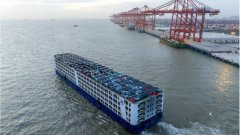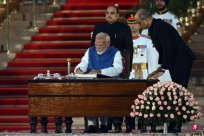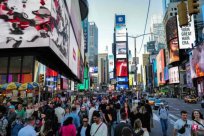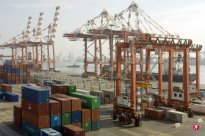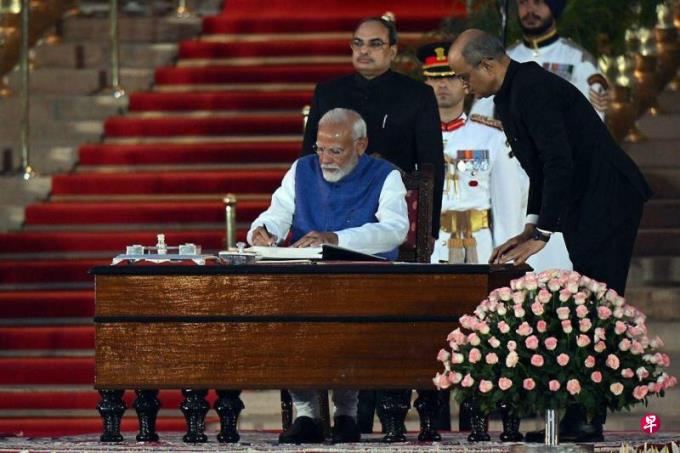
In the background of the background of local decentralization in the background of local decentralization in the background of the alien council with the ally and the ally. Not only will Modi's authority authoritarian be tested unprecedentedly, and any major plan will become difficult.
The National Democratic Alliance (NDA) led by the Indian People's Party once again won in the election, and Modi was able to start the third prime minister's term.According to Modi's governance plan, the construction of infrastructure will be the focus of infrastructure construction in the next five years.All infrastructure built within the year finally achieved a "shining India" after inflation adjustment.Giant infrastructure investment is also regarded as the core section of "Modi Economics 3.0".
It should be said that Modi attaches great importance to infrastructure from the beginning.During the first term, the Modi government spent more than 30 billion US dollars to build 12 million toilets across the country, with an average of about 40 rooms per minute, solving the problem of 600 million people.According to Modi himself, the toilet coverage rate reaches 99%. The more important economic significance is that this plan named "Clean India" by Modi increases the sales of concrete building materials by about 81%.Product sales increased by about 48%; if the treatment and resource reconstruction of excretion were added, the industry scale -related industries related to toilet in India reached US $ 62 billion in 2021, increasing a lot to "Modi Economics 1.0".
The core content of "Modi Economics 2.0" is to boost manufacturing.At the beginning of the second term, Modi vowed to increase the proportion of manufacturing to the GDP (GDP) to 25%by 2025, and by 2030, India will become the "Global Manufacturing Center".To this end, the Modi government has continuously optimized and upgraded various incentive measures while privating aviation, energy, telecommunications and other fields, and the biggest impact is 14 industries such as consumer electronics.
Under a total amount of $ 26 billion in incentive plans, the Modi government also specifically launched a special fund arrangement of $ 10 billion for semiconductor companies to encourage domestic and foreign companies to build factories in India.Electronic equipment hardware manufacturers set up factories in India, which should be implemented by the "Made in India" plan.Modi continued to focus on the traffic infrastructure, and its investment in the infrastructure field accounted for GDP, from 3.5%in 2019 to 4.5%in 2023.According to the estimation of the Indian National Bureau of Statistics, the capital expenditure per spent 1 rupee can drive economic output to increase by 4.8 rupees, while the boring numbers are surging, the unprecedented new pattern of India's infrastructure.
Pay attention to the layout of digital infrastructure
While promoting traditional infrastructure, the Modi government also attaches great importance to the layout of digital infrastructure. The current "digital public infrastructure" project has been put into use in three aspects: identity, payment and data management.Citizens across the country can not only open bank accounts and directly receive government benefits through the identity recognition system named Aadhaar, but also use the national unified "digital public infrastructure" (DPI) to conduct digital payment very lightly and quickly;The needs of public products such as protection and medical care can be obtained from a positive response from the DPI platform.It is worth noting that the DPI also creates a public access version, and many countries have customized the DPI they needed to the Indian government.
The public investment of infrastructure has a significant multiplication effect. According to data from the Indian Economic Monitoring Center, the new investment project announced by private enterprises in 2023 is more than US $ 200 billion, which is the highest in 10 years, and during Modi's second term, it is during the second term of Modi.Names increased by 150%.In the past 10 years, Modi brought India's economic growth rate into an average annual track of 7%and became the fastest growing large economy in the world.More importantly, due to the improvement of infrastructure, India has risen six among the 2023 logistics performance indexes of the World Bank, ranking 38th among 139 countries, and has increased six gears from the beginning of the second term.
The vast rural infrastructure is to be forced
However, for previous achievements, Modi said that it was just an appetizer, and the real main course would be presented in the third term.At present, the vast rural areas are still lacking in highway construction. Many roads between cities are still bicycle lanes. In terms of railway, more than 80 % of them are built during the British colonial period. The facilities are old and backward.Unity; more importantly, there are still a quarter of people who do not use electricity, and water resources are extremely scarce.At the same time, the average logistics cost of India accounts for 13%of income, while the global average is only 8%.In this regard, the Modi government must step on the infrastructure throttle.Modi also increased Indian GDP from the current $ 3.5 trillion to US $ 6.7 trillion in 2034, which is equivalent to turning over the next 10 years.
As the first main dish for infrastructure investment, the Modi government has announced a number of shocking global budgets in the 2024 budget: it will be applied to 11.11 trillion rupees for infrastructure and achieved the largest annual capital expenditure in India's history.EssenceThis is not enough, and the next two years will increase 44.4 trillion rupees.If in accordance with such an annual budget scale, theoretically, Modi may expand public investment in infrastructure to at least 55 trillion rupees during the third term.
However, plan arrangements are one thing, and there is enough real gold and silver is another thing.Data show that the current proportion of Indian government debt is 88%, with a total of 155 trillion rupees. The level of debt is much higher than the 60%debt limit recommended by the International Monetary Fund (IMF), which also exceeds the average level of other emerging market countries.Not only that, the Indian fiscal deficit rose to 6.8%last year, much higher than the IMF recommended 3%.In this case, whether there can be more incremental funds to stabilize the infrastructure market, it is full of uncertainty.
India's appropriate year labor force accounts for a large ratio, and the human resources required for infrastructure are very rich. The problem is that less than 10%of the labor force has received some form of vocational training.The shortage became a big flaw.For example, the collision of the three trains in the eastern Eastern India due to the years of disrepair, resulting in the country's "the worst" railway accident in this century; the Cross -Henghe Bridge, which costs 17.1 billion rupees, was bombarded in just 14 months in just 14 months.Collapse; one after another in infrastructure disaster is also testing the confidence of civil capital and international investment.It is not technological to go, only the number of quantities has increased, and no matter how large the "stall" is, it is also a table. The actual effectiveness value is not only unsustainable, but also difficult to get the market.
The reason why Modi can show his fists in the infrastructure field is completely based on the political endorsement of strong governance. However, the third in the next, Modi will be restricted or even unprepared.The Indian Parliament has a total of 543 seats, which is different from the previous two -term Indian party to occupy the vast majority of seats. Only 240 seats have obtained only 240 seats in the current government.Modi had to form an alliance with the People's Party (unified faction) and the Tyzu Township Party a few days ago to form a joint government.It is worth noting that these two key party leaders have always been famous and unreliable, and they have occurred from time to time. Among them, the hometown party of Tyuku has always been ambiguous with India's largest opposition party.From this, it is not difficult to imagine that in the background of the background of local decentralization in the background of local decentralization in the background of the background of the alien council and the allies, not only will Modi's authoritative authority be tested unprecedentedly, and any major plan will become difficult.Modi tried to reproduce the glorious scene of infrastructure in the past, and it may be just a dream.The author is a director and professor of economics in the Chinese Market Society

